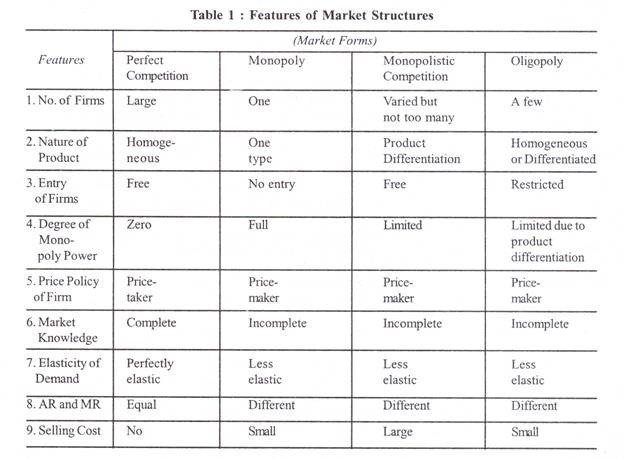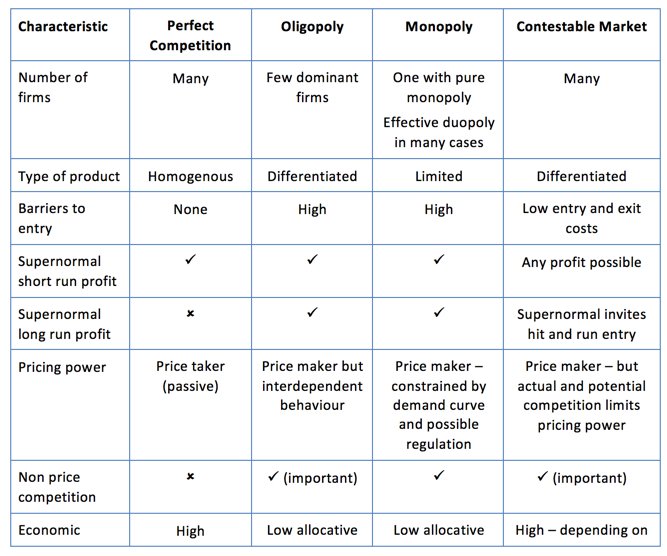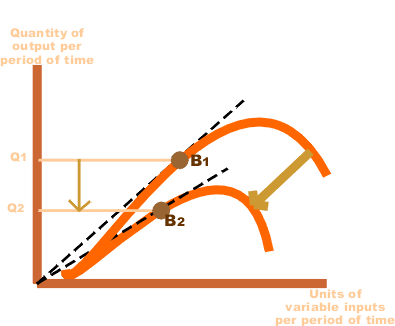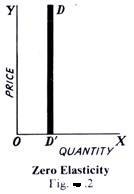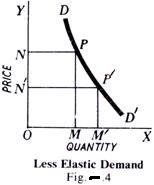National Income refers to the total monetary value of all final goods and services produced by the residents of a country during a specific accounting year. It includes income earned from both domestic and foreign sources, but only by citizens or institutions of the country. National income is a critical indicator of the economic performance of a nation and reflects the overall economic health and living standards of its population.
Economists often define national income as the net national product at factor cost (NNPfc). It is calculated by subtracting depreciation and indirect taxes from the Gross Domestic Product (GDP) and adding subsidies. It encompasses all forms of income—wages, rent, interest, and profit—earned by factors of production (land, labor, capital, and entrepreneurship).
According to Marshall: “The labour and capital of a country acting on its natural resources produce annually a certain net aggregate of commodities, material and immaterial including services of all kinds. This is the true net annual income or revenue of the country or national dividend.” In this definition, the word ‘net’ refers to deductions from the gross national income in respect of depreciation and wearing out of machines. And to this, must be added income from abroad.
Simon Kuznets has defined national income as “the net output of commodities and services flowing during the year from the country’s productive system in the hands of the ultimate consumers.”
On the other hand, in one of the reports of United Nations, national income has been defined on the basis of the systems of estimating national income, as net national product, as addition to the shares of different factors, and as net national expenditure in a country in a year’s time. In practice, while estimating national income, any of these three definitions may be adopted, because the same national income would be derived, if different items were correctly included in the estimate.
Methods of Estimating National Income:
National Income is a measure of the economic performance of a nation. It can be estimated using three primary methods: Production Method, Income Method, and Expenditure Method. All three aim to calculate the same value from different angles—output, income, and spending.
1. Expenditure Method of Estimating National Income
The Expenditure Method measures national income by calculating the total expenditure incurred on final goods and services produced within the domestic territory of a country during an accounting year. It reflects the demand side of the economy and is commonly used to calculate Gross Domestic Product (GDP) at market prices.
Components of Expenditure Method:
The formula is:
GDP (MP) = C + I + G + (X−M)
Where:
- C – Private Final Consumption Expenditure: Spending by households on goods and services (e.g., food, clothing, education, etc.).
- I – Gross Domestic Capital Formation (Investment Expenditure): Includes investment in fixed capital (machinery, buildings) and inventory accumulation by businesses.
- G – Government Final Consumption Expenditure: Spending by the government on goods and services such as defense, education, and health.
- X – Exports of Goods and Services: Goods and services sold to foreigners.
- M – Imports of Goods and Services: Goods and services bought from foreign countries. It is subtracted because it’s not part of domestic production.
Steps to Calculate National Income using Expenditure Method:
Step 1: Calculate Final Consumption Expenditure
This is the first and largest component of national expenditure. It includes the total amount spent by households and government on final goods and services.
- Private Final Consumption Expenditure (PFCE): It covers all spending by households on goods like food, clothing, healthcare, and services like education and entertainment.
- Government Final Consumption Expenditure (GFCE): This includes all spending by the government on goods and services such as salaries of public servants, defense services, and public health.
Only final expenditures are counted to avoid double counting. Intermediate consumption is excluded.
Step 2: Measure Gross Domestic Capital Formation (Investment Expenditure)
This includes all investments made by businesses and the government in the production process.
- Gross Fixed Capital Formation: Investments in buildings, machinery, vehicles, and infrastructure.
- Change in Inventories: Any change in stock of raw materials, semi-finished, and finished goods held by firms.
Together, these reflect the value added to the capital stock of the economy.
Step 3: Calculate Net Exports (Exports – Imports)
Net exports reflect the value of foreign trade in the economy.
- Exports (X): Goods and services produced domestically and sold abroad.
- Imports (M): Goods and services produced abroad and purchased domestically.
To ensure only domestic production is accounted for, imports are subtracted from exports. The result is:
Net Exports=X−M
If exports exceed imports, net exports will be positive and add to national income. If imports exceed exports, net exports will be negative and reduce national income.
Step 4: Add All the Components to Get GDP at Market Prices (GDPMP)
Now that we have all three key components—consumption (C), investment (I), and net exports (X – M)—along with government expenditure (G), we calculate GDP at Market Prices:
GDP at M.P =C+I+G+(X−M)
Where:
- C = Private Final Consumption
- I = Investment
- G = Government Final Consumption
- X = Exports
- M = Imports
This represents the total market value of all final goods and services produced within the domestic territory during the year.
Step 5: Deduct Net Indirect Taxes to Get GDP at Factor Cost (GDPFC)
GDP at market prices includes indirect taxes like GST and excise duties, which are not part of factor incomes. We deduct Net Indirect Taxes (NIT) to convert GDPMP into GDP at Factor Cost (GDPFC).
Step 6: Add Net Factor Income from Abroad (NFIA) to Get National Income
The final step involves adjusting for international income flows. We add Net Factor Income from Abroad (NFIA) to GDP at factor cost to get National Income or Net National Product at Factor Cost (NNPFC).
2. Income Received Approach (Income Method)
The Income Method of estimating national income focuses on calculating the total income earned by the factors of production (land, labor, capital, and entrepreneurship) in the production of goods and services within a country during an accounting year. It emphasizes the distribution side of national income rather than the production or expenditure side.
Basic Principle of Income Received Approach:
National income is the sum of all factor incomes earned in the form of:
- Wages (for labor)
- Rent (for land)
- Interest (for capital)
- Profits (for entrepreneurship)
- Mixed incomes (for self-employed individuals)
Components of the Income Method:
The national income using the income method includes the following key components:
1. Compensation of Employees (Wages and Salaries)
- Includes all forms of remuneration paid to labor.
- Covers wages, salaries, bonuses, pensions, and employer’s contributions to social security.
2. Rent
- Income earned from the use of land or property.
- Includes actual rent and imputed rent of owner-occupied houses.
3. Interest
- Income earned by capital as a factor of production.
- Includes interest on loans used for production, but excludes interest on government bonds (transfer payment).
4. Profits
Income earned by entrepreneurs for taking business risks.
Includes:
- Dividends,
- Undistributed profits,
- Corporate taxes.
5. Mixed Income of Self-employed
6. Net Factor Income from Abroad (NFIA)
This is the difference between income earned by residents from abroad and income earned by foreigners in the domestic territory.
Formula for National Income (NNP at Factor Cost)
National Income =Wages + Rent + Interest + Profits + Mixed Income + NFIA
Steps to Estimate National Income by Income Method
Step 1. Identify all productive enterprises and institutions in the economy.
Step 2. Classify factor incomes paid by these entities—wages, rent, interest, profit, and mixed income.
Step 3. Exclude all non-production-related incomes such as:
- Transfer payments (pensions, subsidies),
- Windfall gains (lottery, capital gains),
- Illegal incomes (black money),
- Intermediate incomes.
Step 4. Add Net Factor Income from Abroad to include international income flows.
Step 5. The resulting figure is the Net National Product at Factor Cost (NNPFC)—which represents national income.
Advantages of Income Method:
-
Gives a clear understanding of income distribution among different sectors.
-
Useful for tax policy, wage regulation, and economic planning.
-
Helps in identifying the contribution of labor, capital, and entrepreneurship in GDP.
Limitations of Income Method:
-
Requires accurate and detailed income data, which is often difficult to collect.
-
Mixed income can be hard to classify accurately.
-
Incomes earned in the informal sector may be underreported or unrecorded.
3. Production Method of Estimating National Income
The Production Method, also called the Output Method or Value-Added Method, measures national income by calculating the total value of goods and services produced in the economy over a given period, usually one year. It is based on the principle of value addition at each stage of production.
Basic Principle of Production Method of Estimating National Income
This method calculates national income as the sum total of net value added at each stage in the production process across all sectors of the economy. The approach avoids double counting by subtracting the value of intermediate goods used during production.
Steps in the Production Method:
Step 1: Identify and Classify Productive Sectors
The economy is divided into three main sectors:
-
Primary Sector – Agriculture, forestry, fishing, mining.
-
Secondary Sector – Manufacturing, construction.
-
Tertiary Sector – Services like banking, transport, communication, education, health.
All productive enterprises in these sectors are included.
Step 2: Calculate Gross Value of Output (GVO)
For each enterprise or sector, calculate the total market value of output (goods and services) produced during the year:
GVO = Quantity of output × Market Price
Step 3: Subtract Intermediate Consumption to Find Gross Value Added (GVA)
To avoid double counting, subtract the value of intermediate goods and services used in production:
GVA = Gross Value of Output (GVO) − Intermediate Consumption
This step yields the Net Value Added by each firm or sector.
Step 4: Sum Up the GVA of All Sectors
Add the GVA from all sectors and industries to find the Gross Domestic Product at Market Price (GDPMP):
Step 5: Deduct Net Indirect Taxes to Find GDP at Factor Cost
GDPMP includes indirect taxes (like GST) and excludes subsidies. To arrive at GDP at Factor Cost (GDPFC):
GDP = GDP − Net Indirect Taxes
Where:
Step 6: Add Net Factor Income from Abroad to Find National Income
To convert Domestic Product into National Product, add Net Factor Income from Abroad (NFIA):
NNP = GDP + NFIA
This gives the Net National Product at Factor Cost, which is National Income.
Precautions While Using Production Method:
-
Avoid Double Counting: Only the value added at each stage should be considered, not the total value of output.
-
Exclude Non-productive Activities: Transfer payments, illegal activities, or purely financial transactions should not be included.
-
Consider Only Final Goods: Intermediate goods should be subtracted to ensure accuracy.
-
Include Imputed Values: Include estimated values like rent of owner-occupied houses and goods produced for self-consumption.
Advantages of Production Method:
-
Directly measures productive capacity and sectoral contribution.
-
Useful for identifying which sectors drive economic growth.
-
Helps in analyzing industrial structure and development.
Limitations of Production Method:
-
Difficult to get accurate data, especially from unorganized or informal sectors.
-
Challenges in estimating self-consumed goods or home-produced services.
-
Excludes non-market transactions which may be economically significant.
4. Value Added or Net Product Method
The Value Added Method, also known as the Net Product Method or Production Method, estimates national income by measuring the net contribution of each producing unit or sector in the economy. It is called the “value added” method because it focuses on the additional value created at each stage of the production process.
Steps in Calculating National Income Using the Value Added Method:
Step 1. Classification of Sectors
The economy is divided into three production sectors:
- Primary Sector: Agriculture, fishing, mining, etc.
- Secondary Sector: Manufacturing, construction, etc.
- Tertiary Sector: Services like banking, trade, transport, etc.
Each sector contributes a portion of the total national income.
Step 2. Estimate Gross Value of Output (GVO)
For each enterprise or sector, compute the value of total production:
Gross Value of Output = Quantity Produced × Price
Step 3. Deduct Intermediate Consumption
Intermediate goods used in production are subtracted to find Gross Value Added (GVA):
GVA=Gross Value of Output−Intermediate Consumption
Step 4. Add Gross Value Added Across Sectors
Total Gross Value Added (GVA) from all sectors gives Gross Domestic Product at Market Price (GDPMP).
Step 5. Adjust for Taxes and Subsidies
To derive Gross Domestic Product at Factor Cost (GDPFC):
GDPFC=GDPMP−Net Indirect Taxes
Where:
Net Indirect Taxes = Indirect Taxes – Subsidies
Step 6. Add Net Factor Income from Abroad (NFIA)
To convert domestic product into national product, we add:
National Income (NNPFC) = GDP + Net Factor Income from Abroad
This yields the Net National Product at Factor Cost, which is the national income.
Advantages of Value Added Method:
- Prevents double counting by focusing on net contributions.
- Helps determine sector-wise contributions to the economy.
- Useful for productivity analysis.
Precautions in Using This Method:
- Include only productive activities (exclude transfers, illegal income).
- Use imputed values where actual data isn’t available (e.g., rent of owner-occupied houses).
- Exclude the value of intermediate goods.
- Accurate data collection is essential, especially from informal sectors.
Concepts of National Income
There are a number of concepts pertaining to national income and methods of measurement relating to them.
(i) Gross National Product (GNP)
GNP is the total measure of the flow of goods and services at market value resulting from current production during a year in a country, including net income from abroad.
GNP includes four types of final goods and services:
Consumers’ goods and services to satisfy the immediate wants of the people;
Gross private domestic investment in capital goods consisting of fixed capital formation, residential construction and inventories of finished and unfinished goods;
Goods and services produced by the government; and
Net exports of goods and services, i.e., the difference between value of exports and imports of goods and services, known as net income from abroad.
(ii) Gross Domestic Product (GDP)
GDP is the total value of goods and services produced within the country during a year. This is calculated at market prices and is known as GDP at market prices. Dernberg defines GDP at market price as “the market value of the output of final goods and services produced in the domestic territory of a country during an accounting year.”
(iii) Nominal and Real GDP
When GDP is measured on the basis of current price, it is called GDP at current prices or nominal GDP. On the other hand, when GDP is calculated on the basis of fixed prices in some year, it is called GDP at constant prices or real GDP.
Nominal GDP is the value of goods and services produced in a year and measured in terms of rupees (money) at current (market) prices. In comparing one year with another, we are faced with the problem that the rupee is not a stable measure of purchasing power. GDP may rise a great deal in a year, not because the economy has been growing rapidly but because of rise in prices (or inflation).
On the contrary, GDP may increase as a result of fall in prices in a year but actually it may be less as compared to the last year. In both 5 cases, GDP does not show the real state of the economy. To rectify the underestimation and overestimation of GDP, we need a measure that adjusts for rising and falling prices.
This can be done by measuring GDP at constant prices which is called real GDP. To find out the real GDP, a base year is chosen when the general price level is normal, i.e., it is neither too high nor too low. The prices are set to 100 (or 1) in the base year.
(iv) GDP Deflator
GDP deflator is an index of price changes of goods and services included in GDP. It is a price index which is calculated by dividing the nominal GDP in a given year by the real GDP for the same year and multiplying it by 100.
(v) GDP at Factor Cost
GDP at factor cost is the sum of net value added by all producers within the country. Since the net value added gets distributed as income to the owners of factors of production, GDP is the sum of domestic factor incomes and fixed capital consumption (or depreciation).
Thus GDP at Factor Cost = Net value added + Depreciation.
GDP at factor cost includes:
Compensation of employees i.e., wages, salaries, etc.
Operating surplus which is the business profit of both incorporated and unincorporated firms. [Operating Surplus = Gross Value Added at Factor Cost—Compensation of Employees—Depreciation]
Mixed Income of Self- employed
Conceptually, GDP at factor cost and GDP at market price must be identical/This is because the factor cost (payments to factors) of producing goods must equal the final value of goods and services at market prices. However, the market value of goods and services is different from the earnings of the factors of production.
In GDP at market price are included indirect taxes and are excluded subsidies by the government. Therefore, in order to arrive at GDP at factor cost, indirect taxes are subtracted and subsidies are added to GDP at market price.
Thus, GDP at Factor Cost = GDP at Market Price – Indirect Taxes + Subsidies.
(vi) Net Domestic Product (NDP)
NDP is the value of net output of the economy during the year. Some of the country’s capital equipment wears out or becomes obsolete each year during the production process. The value of this capital consumption is some percentage of gross investment which is deducted from GDP. Thus Net Domestic Product = GDP at Factor Cost – Depreciation.
(vii) GNP at Factor Cost
GNP at factor cost is the sum of the money value of the income produced by and accruing to the various factors of production in one year in a country. It includes all items mentioned above under income method to GNP less indirect taxes.
GNP at market prices always includes indirect taxes levied by the government on goods which raise their prices. But GNP at factor cost is the income which the factors of production receive in return for their services alone. It is the cost of production.
Thus GNP at market prices is always higher than GNP at factor cost. Therefore, in order to arrive at GNP at factor cost, we deduct indirect taxes from GNP at market prices. Again, it often happens that the cost of production of a commodity to the producer is higher than a price of a similar commodity in the market.
In order to protect such producers, the government helps them by granting monetary help in the form of a subsidy equal to the difference between the market price and the cost of production of the commodity. As a result, the price of the commodity to the producer is reduced and equals the market price of similar commodity.
For example if the market price of rice is Rs. 3 per kg but it costs the producers in certain areas Rs. 3.50. The government gives a subsidy of 50 paisa per kg to them in order to meet their cost of production. Thus in order to arrive at GNP at factor cost, subsidies are added to GNP at market prices.
GNP at Factor Cost = GNP at Market Prices – Indirect Taxes + Subsidies.
(viii) GNP at Market Prices
When we multiply the total output produced in one year by their market prices prevalent during that year in a country, we get the Gross National Product at market prices. Thus GNP at market prices means the gross value of final goods and services produced annually in a country plus net income from abroad. It includes the gross value of output of all items from (1) to (4) mentioned under GNP. GNP at Market Prices = GDP at Market Prices + Net Income from Abroad.
(xi) Net National Product (NNP)
NNP includes the value of total output of consumption goods and investment goods. But the process of production uses up a certain amount of fixed capital. Some fixed equipment wears out, its other components are damaged or destroyed, and still others are rendered obsolete through technological changes.
All this process is termed depreciation or capital consumption allowance. In order to arrive at NNP, we deduct depreciation from GNP. The word ‘net’ refers to the exclusion of that part of total output which represents depreciation. So NNP = GNP—Depreciation.
(x) NNP at Factor Cost
Net National Product at factor cost is the net output evaluated at factor prices. It includes income earned by factors of production through participation in the production process such as wages and salaries, rents, profits, etc. It is also called National Income. This measure differs from NNP at market prices in that indirect taxes are deducted and subsidies are added to NNP at market prices in order to arrive at NNP at factor cost. Thus
NNP at Factor Cost = NNP at Market Prices – Indirect taxes+ Subsidies
= GNP at Market Prices – Depreciation – Indirect taxes + Subsidies.
= National Income.
Normally, NNP at market prices is higher than NNP at factor cost because indirect taxes exceed government subsidies. However, NNP at market prices can be less than NNP at factor cost when government subsidies exceed indirect taxes.
(xi) NNP at Market Prices
Net National Product at market prices is the net value of final goods and services evaluated at market prices in the course of one year in a country. If we deduct depreciation from GNP at market prices, we get NNP at market prices. So NNP at Market Prices = GNP at Market Prices—Depreciation.
(xii) Domestic Income
Income generated (or earned) by factors of production within the country from its own resources is called domestic income or domestic product.
Domestic income includes:
- Wages and salaries
- Rents, including imputed house rents
- Interest
- Dividends
- Undistributed corporate profits, including surpluses of public undertakings
- Mixed incomes consisting of profits of unincorporated firms, self- employed persons, partnerships, etc., and
- Direct taxes
Since domestic income does not include income earned from abroad, it can also be shown as: Domestic Income = National Income-Net income earned from abroad. Thus the difference between domestic income f and national income is the net income earned from abroad. If we add net income from abroad to domestic income, we get national income, i.e., National Income = Domestic Income + Net income earned from abroad.
But the net national income earned from abroad may be positive or negative. If exports exceed import, net income earned from abroad is positive. In this case, national income is greater than domestic income. On the other hand, when imports exceed exports, net income earned from abroad is negative and domestic income is greater than national income.
(xiii) Personal Income
Personal income is the total income received by the individuals of a country from all sources before payment of direct taxes in one year. Personal income is never equal to the national income, because the former includes the transfer payments whereas they are not included in national income.
Personal income is derived from national income by deducting undistributed corporate profits, profit taxes, and employees’ contributions to social security schemes. These three components are excluded from national income because they do reach individuals.
But business and government transfer payments, and transfer payments from abroad in the form of gifts and remittances, windfall gains, and interest on public debt which are a source of income for individuals are added to national income. Thus Personal Income = National Income – Undistributed Corporate Profits – Profit Taxes – Social Security Contribution + Transfer Payments + Interest on Public Debt.
Personal income differs from private income in that it is less than the latter because it excludes undistributed corporate profits.
Thus Personal Income = Private Income – Undistributed Corporate Profits – Profit Taxes.
(xiv) Private Income
Private income is income obtained by private individuals from any source, productive or otherwise, and the retained income of corporations. It can be arrived at from NNP at Factor Cost by making certain additions and deductions.
The additions include transfer payments such as pensions, unemployment allowances, sickness and other social security benefits, gifts and remittances from abroad, windfall gains from lotteries or from horse racing, and interest on public debt. The deductions include income from government departments as well as surpluses from public undertakings, and employees’ contribution to social security schemes like provident funds, life insurance, etc.
Thus Private Income = National Income (or NNP at Factor Cost) + Transfer Payments + Interest on Public Debt — Social Security — Profits and Surpluses of Public Undertakings.
(xv) Disposable Income
Disposable income or personal disposable income means the actual income which can be spent on consumption by individuals and families. The whole of the personal income cannot be spent on consumption, because it is the income that accrues before direct taxes have actually been paid. Therefore, in order to obtain disposable income, direct taxes are deducted from personal income. Thus Disposable Income=Personal Income – Direct Taxes.
But the whole of disposable income is not spent on consumption and a part of it is saved. Therefore, disposable income is divided into consumption expenditure and savings. Thus Disposable Income = Consumption Expenditure + Savings.
If disposable income is to be deduced from national income, we deduct indirect taxes plus subsidies, direct taxes on personal and on business, social security payments, undistributed corporate profits or business savings from it and add transfer payments and net income from abroad to it.
Thus Disposable Income = National Income – Business Savings – Indirect Taxes + Subsidies – Direct Taxes on Persons – Direct Taxes on Business – Social Security Payments + Transfer Payments + Net Income from abroad.
(xvi) Per Capita Income
The average income of the people of a country in a particular year is called Per Capita Income for that year. This concept also refers to the measurement of income at current prices and at constant prices. For instance, in order to find out the per capita income for 2001, at current prices, the national income of a country is divided by the population of the country in that year.
(xvii) Real Income
Real income is national income expressed in terms of a general level of prices of a particular year taken as base. National income is the value of goods and services produced as expressed in terms of money at current prices. But it does not indicate the real state of the economy.
It is possible that the net national product of goods and services this year might have been less than that of the last year, but owing to an increase in prices, NNP might be higher this year. On the contrary, it is also possible that NNP might have increased but the price level might have fallen, as a result national income would appear to be less than that of the last year. In both the situations, the national income does not depict the real state of the country. To rectify such a mistake, the concept of real income has been evolved.
In order to find out the real income of a country, a particular year is taken as the base year when the general price level is neither too high nor too low and the price level for that year is assumed to be 100. Now the general level of prices of the given year for which the national income (real) is to be determined is assessed in accordance with the prices of the base year. For this purpose the following formula is employed.
Real NNP = NNP for the Current Year x Base Year Index (=100) / Current Year Index
Suppose 1990-91 is the base year and the national income for 1999-2000 is Rs. 20,000 crores and the index number for this year is 250. Hence, Real National Income for 1999-2000 will be = 20000 x 100/250 = Rs. 8000 crores. This is also known as national income at constant prices.
Like this:
Like Loading...

